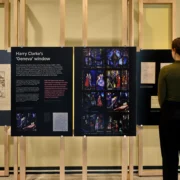The Story of Us
Sustainability in Exhibition Design: Much to consider
Environmental impact must now be at the heart of everything we do. Designers, in particular, hold a significant responsibility in this regard.
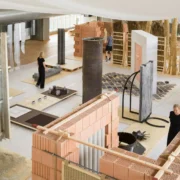
Every design choice impacts the environment. Graphic designers have long considered the environmental effects of their work. They’ve used eco-friendly or recycled papers, soy-based inks, and local printing to save money and reduce environmental harm. Many believed switching from paper to digital was the ideal solution. However, we now understand that digital technology and the internet also have a significant environmental impact due to their high electricity consumption. This realisation is leading to a significant push towards developing low-impact digital communications.
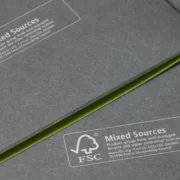
At its core, sustainable exhibition design prioritises reducing resource consumption, waste generation, and carbon emissions.
One design field with a tremendous footprint (and thus opportunities for reducing it) is exhibition design. Exhibition design is a broad field, ranging from a weekend-long exhibition with a few boards to a permanent museum exhibition like the 3,700m² immersive digital experience EPIC – The Irish Emigration Museum.
Sustainable exhibition design represents a crucial shift in how we approach and execute exhibitions. It aims to minimise environmental impact while delivering engaging and impactful experiences. At its core, sustainable exhibition design prioritises reducing resource consumption, waste generation, and carbon emissions.
12 Key Considerations
- Material selection is crucial, favouring renewable, recyclable, and low-impact materials over resource-intensive ones.
- If your exhibition is temporary, use materials like honeycomb (essentially cardboard) that are easy to recycle.
- If you must use materials like MDF, use MDF made with recycled wood and without formaldehyde.
- Opt for locally sourced materials to minimise transportation-related emissions.
- Focus on modularity and reusability in the design process. This will enable exhibition components to be repurposed in future installations or events, thereby extending their lifecycle and reducing overall waste.
- Integrate energy-efficient lighting systems, such as LED lights, and use natural lighting whenever possible.
- Explore technologies like motion sensors to ensure that lighting and other systems are only active when needed, minimising unnecessary energy use during periods of low attendance or when certain exhibition areas are unoccupied.
- Minimising the distance that materials and components need to travel: partner with local suppliers, sourcing materials from nearby regions, and employing efficient transportation methods
- Aim to create modular and lightweight structures that are easy to transport.
- Think about the lifecycle of each element of the exhibition.
- Focus on creating exhibits that can be disassembled with minimal waste generation and separated into recyclable or compostable components.
- Talk about how your exhibition can promote sustainability and educate & inspire attendees about the importance of sustainability.
A case study in sustainable exhibition design
We worked with the National Archives on their exhibition and book to mark 100 years since Ireland joined the League of Nations, heralding its arrival on the Global Stage. The exhibition was to occur in multiple venues: Dublin, Geneva, and the UN in New York. Working with John McLaughlin Architects, our task was to create a highly sustainable, modular, and reusable exhibition.
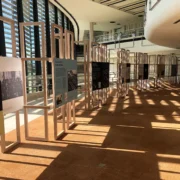
The graphic design aspect of the project was an easy solution: highly recyclable honeycomb boards printed locally.
A beautifully elegant solution was arrived at for the exhibition framework. It would be a modular oak frame designed to be a highly adaptable and reusable object. The frame was designed as freestanding, robust, with removable concealed connections between modules, and capable of supporting graphic boards and objects using simple connections.
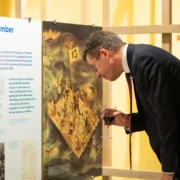
Making exhibitions more sustainable will take a mindset shift. Designers have historically contributed to the throwaway economy, but a new generation is rising to the challenge of reducing the industry’s impact and taking responsibility for their creations. However, it will take both carrot and stick. Organisations requesting exhibition services must play their part in prioritising a sustainable approach to design. Amongst other things, they must ask tenderers:
- to demonstrate the ability to minimise the impact of their work
- to provide information on the carbon footprint and impact of their work
- what materials are they going to use
- what is their plan to reuse/donate the materials at the end of the exhibition
The Design Museum in London have produced a helpful guide: Design Museum – A guide to reducing the environmental impact of exhibitions (PDF, March 2023). It should, of course, not be a PDF, but it is a helpful document.
Overall, the cultural sector is not one of the significant polluters, and Exhibition/Museum design is broadly speaking a force for good. However, like every sector, we do have a large role to play in reducing our impact.
We cannot solve our problems with the same thinking we used when we created them.
Albert Einstein
